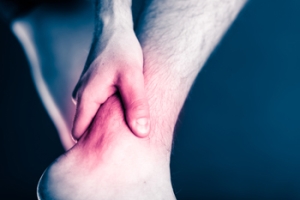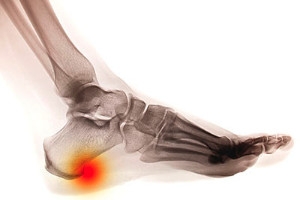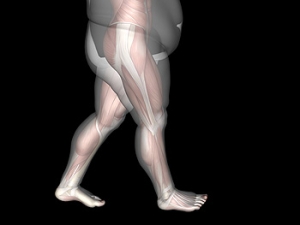
Foot Orthotics
Orthotics are shoe inserts that are meant to correct an irregular walking gait or provide cushioning to the feet. Orthotics come in a variety of different models and sizes, including over-the-counter and customizable variants. Customizable orthotics can be shaped and contoured to fit inside a specific shoe and are typically prescribed through a podiatrist who specializes in customized footwear and orthotics design and management.
Orthotics are beneficial because they can help prevent injuries from occurring and provide cushioning to keep pain levels down to a minimum. They also allow for the correct positioning of the feet. Orthotics can act as shock absorbers to help remove pressure from the foot and ankle. Therefore, orthotics can make bodily movements, such as walking and running, become more comfortable as well as help prevent the development of certain foot conditions.
Orthotics alleviate pain and make the foot more comfortable by slightly altering the angle at which the foot strikes the ground surface, therefore controlling the movement of the foot and ankle. Orthotics come in different variants and can be made of various materials. To determine what type of orthotic is most suited to your feet and your needs, it is best to consult your podiatrist. He or she will be able to recommend a type of orthotic that can help improve your foot function or prescribe a custom orthotic to best fit your feet.
When Should I See a Doctor for My Ankle Pain?
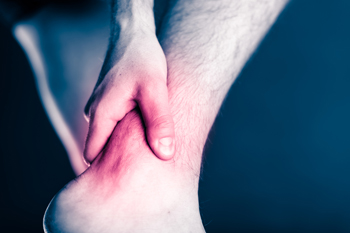 Pain in the ankles can have a variety of causes that range from a sprain or fracture to conditions such as arthritis. Ankle pain can also present itself with different symptoms such as burning, aching or throbbing pain that is either sudden or increases gradually, and ankle bruising or redness. If you are unsure of the cause of your ankle pain, it is recommended that you see a podiatrist. Other reasons to see a podiatrist include a deformity in the ankle, inability to comfortably walk, pain that occurs at night, pain that lasts more than a few days, swelling, an inability to bend the ankle, or if you notice any signs of infection, such as fever, redness, or warm skin. Upon visiting a podiatrist the doctor will perform a physical exam, and an X-ray or other tests may be taken to obtain a proper diagnosis. After the source of pain is found, proper treatment methods can begin.
Pain in the ankles can have a variety of causes that range from a sprain or fracture to conditions such as arthritis. Ankle pain can also present itself with different symptoms such as burning, aching or throbbing pain that is either sudden or increases gradually, and ankle bruising or redness. If you are unsure of the cause of your ankle pain, it is recommended that you see a podiatrist. Other reasons to see a podiatrist include a deformity in the ankle, inability to comfortably walk, pain that occurs at night, pain that lasts more than a few days, swelling, an inability to bend the ankle, or if you notice any signs of infection, such as fever, redness, or warm skin. Upon visiting a podiatrist the doctor will perform a physical exam, and an X-ray or other tests may be taken to obtain a proper diagnosis. After the source of pain is found, proper treatment methods can begin.
Ankle pain can be caused by a number of problems and may be potentially serious. If you have ankle pain, consult with one of our doctors from Coral Desert Foot & Ankle. Our doctors will assess your condition and provide you with quality foot and ankle treatment.
Ankle pain is any condition that causes pain in the ankle. Due to the fact that the ankle consists of tendons, muscles, bones, and ligaments, ankle pain can come from a number of different conditions.
Causes
The most common causes of ankle pain include:
- Types of arthritis (rheumatoid, osteoarthritis, and gout)
- Ankle sprains
- Broken ankles
- Achilles tendonitis
- Achilles tendon rupture
- Stress fractures
- Bursitis
- Tarsal tunnel syndrome
- Plantar fasciitis
Symptoms
Symptoms of ankle injury vary based upon the condition. Pain may include general pain and discomfort, swelling, aching, redness, bruising, burning or stabbing sensations, and/or loss of sensation.
Diagnosis
Due to the wide variety of potential causes of ankle pain, podiatrists will utilize a number of different methods to properly diagnose ankle pain. This can include asking for personal and family medical histories and of any recent injuries. Further diagnosis may include sensation tests, a physical examination, and potentially x-rays or other imaging tests.
Treatment
Just as the range of causes varies widely, so do treatments. Some more common treatments are rest, ice packs, keeping pressure off the foot, orthotics and braces, medication for inflammation and pain, and surgery.
If you have any questions, please feel free to contact one of our offices located in St. George and Kanab, UT, and Mesquite, NV . We offer the newest diagnostic and treatment technologies for all your foot care needs.
Ankle Pain
Pain experienced in the ankle can be caused by a multitude of conditions. While the most common cause is an ankle sprain, other possible problems can include arthritis, gout, ankle instability, an ankle fracture, nerve compression, or tendinitis. In more serious cases, ankle pain can be a sign of improper alignment of the foot or an infection.
Ankle pain can often be accompanied by symptoms such as redness, swelling, stiffness, and warmth in the affected area. Pain can be described differently depending on the condition: short, stabbing pain and a dull ache are some examples. If such symptoms are persistent and do not improve after time, be sure to schedule an appointment with your local podiatrist.
Depending on the condition causing your ankle pain, different treatments may be prescribed by your podiatrist. For ankle sprains, the first step in treatment involves rest, ice, elevation, and compression. Be sure to avoid placing pressure on the ankle, use an ice pack several times a day, and use a compression bandage and elevation to reduce swelling. Other, more serious conditions may require the assistance of certain drugs and medications such as nonsteroidal anti-inflammatory drugs (NSAIDs), physical therapy, or even cortisone injections.
Depending on the severity of your ankle pain and the condition behind it, recovery from ankle pain may take some time.
Consult with your foot and ankle doctor to best determine the cause of your ankle pain and the appropriate treatment.
Stretches May Help Heel Spurs
 A small growth in the heel bone is often referred to as a heel spur. These are bony protrusions that may cause severe pain and discomfort, and can be associated with foot conditions such as plantar fasciitis and Achilles tendon injuries. Some patients find it beneficial to perform specific stretches and exercises that may diminish a portion of the discomfort. An effective stretch consists of raising up on the toes while placing a tennis ball between the ankles, and gently squeezing. Additionally, it may help to roll a tennis ball on the sole of the foot while seated. Mild relief may be found when correct shoes are worn, and it is suggested to refrain from wearing high heels or flip flops. If you have heel pain, it is suggested that you consult with a podiatrist who can properly diagnose and treat heel spurs.
A small growth in the heel bone is often referred to as a heel spur. These are bony protrusions that may cause severe pain and discomfort, and can be associated with foot conditions such as plantar fasciitis and Achilles tendon injuries. Some patients find it beneficial to perform specific stretches and exercises that may diminish a portion of the discomfort. An effective stretch consists of raising up on the toes while placing a tennis ball between the ankles, and gently squeezing. Additionally, it may help to roll a tennis ball on the sole of the foot while seated. Mild relief may be found when correct shoes are worn, and it is suggested to refrain from wearing high heels or flip flops. If you have heel pain, it is suggested that you consult with a podiatrist who can properly diagnose and treat heel spurs.
Heel spurs can be incredibly painful and sometimes may make you unable to participate in physical activities. To get medical care for your heel spurs, contact one of our doctors from Coral Desert Foot & Ankle. Our doctors will do everything possible to treat your condition.
Heels Spurs
Heel spurs are formed by calcium deposits on the back of the foot where the heel is. This can also be caused by small fragments of bone breaking off one section of the foot, attaching onto the back of the foot. Heel spurs can also be bone growth on the back of the foot and may grow in the direction of the arch of the foot.
Older individuals usually suffer from heel spurs and pain sometimes intensifies with age. One of the main condition's spurs are related to is plantar fasciitis.
Pain
The pain associated with spurs is often because of weight placed on the feet. When someone is walking, their entire weight is concentrated on the feet. Bone spurs then have the tendency to affect other bones and tissues around the foot. As the pain continues, the feet will become tender and sensitive over time.
Treatments
There are many ways to treat heel spurs. If one is suffering from heel spurs in conjunction with pain, there are several methods for healing. Medication, surgery, and herbal care are some options.
If you have any questions feel free to contact one of our offices located in St. George and Kanab, UT, and Mesquite, NV . We offer the latest in diagnostic and treatment technology to meet your needs.
How to Treat Heel Spurs
Heel spurs are calcium deposits that cause bone protrusions on the heel bone. Heel spurs are usually associated with plantar fasciitis, which occurs when the plantar fasciitis in the foot becomes inflamed. Typically, heel spurs don’t cause any symptoms. However, they can produce chronic or intermittent heel pain. Those who have had the condition often describe the irritation as a stabbing pain.
There are risk factors that may make you more likely to develop heel spurs. People who have abnormal walking gaits, run and jog on hard surfaces, are obese, or wear poorly fitting shoes are more likely to develop heel spurs.
Fortunately, there are precautions you can take to avoid developing heel spurs. One of the best ways to do this is by wearing well-fitting shoes with shock-absorbent soles. Another preventative technique is to choose running shoes if you plan on running, and walking shoes if you plan on walking. Shoes are made for different activities and it is important to research a shoe before you purchase a pair.
The pain associated with heel spurs often decreases the more you walk. However, a recurrence of pain after an extended period of rest or walking is likely to occur with this condition. Those with severe heel spur pain may opt to go the surgical route for treatment. However, more than 90% of those with the condition get better without surgical treatment. If you have a heel spur and want to know if surgery is right for you, you should go to your podiatrist and he or she will be able to conduct a pre-surgical test or exam to determine if you are an optimal candidate for surgery.
Foot Conditions That May Occur in Children
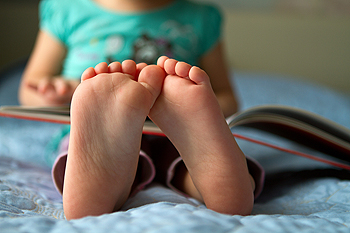 Pain in children's feet may be indicative of growing pains, or underlying medical conditions, and it is important to take notice if your child complains of general aches in their feet. Many young children are active and enjoy participating in running and jumping activities. This may cause sprains, fractures, or injuries to occur. Children who frequent public swimming pools and surrounding areas may get athlete’s foot, which is a fungal infection. Additionally, the medical condition that is known as Sever’s disease can affect the growth plate in the heel in young children, and may cause severe pain and discomfort. Occasionally, children may get bunions, and this can be caused by genetic factors or from wearing shoes that do not have adequate room for the toes to move freely in. It is suggested that your child is diagnosed by a podiatrist, who can properly manage existing foot pain.
Pain in children's feet may be indicative of growing pains, or underlying medical conditions, and it is important to take notice if your child complains of general aches in their feet. Many young children are active and enjoy participating in running and jumping activities. This may cause sprains, fractures, or injuries to occur. Children who frequent public swimming pools and surrounding areas may get athlete’s foot, which is a fungal infection. Additionally, the medical condition that is known as Sever’s disease can affect the growth plate in the heel in young children, and may cause severe pain and discomfort. Occasionally, children may get bunions, and this can be caused by genetic factors or from wearing shoes that do not have adequate room for the toes to move freely in. It is suggested that your child is diagnosed by a podiatrist, who can properly manage existing foot pain.
Making sure that your children maintain good foot health is very important as they grow. If you have any questions, contact one of our doctors of Coral Desert Foot & Ankle. Our doctors can provide the care you need to keep you pain-free and on your feet.
Keeping Children's Feet Healthy
Having healthy feet during childhood can help prevent medical problems later in life, namely in the back and legs. As children grow, their feet require different types of care. Here are some things to consider...
Although babies do not walk yet, it is still very important to take care of their feet.
Avoid putting tight shoes or socks on his or her feet.
Allow the baby to stretch and kick his or her feet to feel comfortable.
As a toddler, kids are now on the move and begin to develop differently. At this age, toddlers are getting a feel for walking, so don’t be alarmed if your toddler is unsteady or ‘walks funny’.
As your child gets older, it is important to teach them how to take care of their feet.
Show them proper hygiene to prevent infections such as fungus.
Be watchful for any pain or injury.
Have all injuries checked by a doctor as soon as possible.
Comfortable, protective shoes should always be worn, especially at play.
If you have any questions please feel free to contact one of our offices located in St. George and Kanab, UT, and Mesquite, NV . We offer the newest diagnostic and treatment technologies for all your foot and ankle needs.
How to Care for Your Child's Feet
It is never normal for a child to experience pain in his or her feet. Foot pain that lasts more than a few days and limits a child’s ability to walk should be examined by a podiatrist. Many adult foot ailments originate in childhood and may be present at birth. Common foot issues that are experienced by children are pediatric flat foot, Sever’s disease, ingrown toenails, and plantar warts.
A child’s foot grows rapidly during the first year, allowing it to reach almost half of their adult foot size. Consequently, foot specialists consider the first year to be the most crucial point in the foot development process. There are ways you can help ensure that your child’s foot develops properly. One way is to carefully look at your baby’s feet. If you notice any deformities, you should immediately seek professional care. You should also loosely cover your child’s foot, since tight coverings may prevent movement and inhibit normal development. Another tip is to change the baby’s positioning throughout the day. If your baby lies down in one spot for too long, it may put an excess amount of strain on the feet and legs.
It is best that you try not to force a child to start walking. Children will begin to walk when they are both physically and emotionally capable to do so. You should also avoid comparing your child’s walking progress with other children because the age range for independent walking may range. When your child’s feet begin to develop, you may need to change both their shoe and sock size every few months to allow room for their feet to grow.
Kids are sometimes prone to splinters, cuts, and severe injuries because they tend to walk around barefoot. This also makes them more susceptible to developing plantar warts which is a condition caused by a virus that invades the sole of the foot through breaks in the skin. These ailments can be avoided by making sure your child wears shoes in unsanitary environments. You should also wash any minor cuts or scrapes on your child’s feet. It is a myth that exposure to fresh air will heal injuries; fresh air will only expose your child’s cuts to germs.
As a parent, you should ensure that your child’s feet are developing properly and are being properly maintained. Consequently, it is important that you perform routine inspections on his or her feet to detect any injuries or deformities in their early stages. Early detection and treatment will help to ensure that your child does not develop any serious foot conditions.
What Can Happen to the Feet as a Result of Being Obese?
 Heel pain may be increased in overweight patients. This can be a result of the added weight that the heels must endure, and chronic foot conditions may develop. The additional weight may cause obese patients to lose interest in exercising, yet exercise is an essential key to losing unwanted pounds. Some patients notice that their foot size has increased, or that their feet have become wider. Additionally, specific forms of arthritis may develop, which can include gout or osteoarthritis. Swelling, pain, and overall foot discomfort may be felt from the strain of the extra weight, in addition to plantar fasciitis and arthritis in the back of the foot. If you are overweight and are experiencing any type of foot pain, it is strongly recommended that you speak to a podiatrist who can properly diagnose and effectively treat this type of pain.
Heel pain may be increased in overweight patients. This can be a result of the added weight that the heels must endure, and chronic foot conditions may develop. The additional weight may cause obese patients to lose interest in exercising, yet exercise is an essential key to losing unwanted pounds. Some patients notice that their foot size has increased, or that their feet have become wider. Additionally, specific forms of arthritis may develop, which can include gout or osteoarthritis. Swelling, pain, and overall foot discomfort may be felt from the strain of the extra weight, in addition to plantar fasciitis and arthritis in the back of the foot. If you are overweight and are experiencing any type of foot pain, it is strongly recommended that you speak to a podiatrist who can properly diagnose and effectively treat this type of pain.
The more you weigh, the harder your feet must work to support your body. If you’re an obese individual and are concerned about your feet, contact one of our doctors from Coral Desert Foot & Ankle. Our doctors can provide the care you need to keep you pain-free and on your feet.
Obesity and Your Feet
People who are overweight are putting more pressure on their ankles, knees, and hips as well as their feet. This unfortunately can lead to variety of different issues.
Problems & Complications Stemming from Obesity
- When the body is overweight, it tries to compensate by changing the way that it moves. An obese person may lean forward and put extra weight on the wrong part of the foot. This puts unnecessary stress on the feet.
- Obese people are also more likely to develop type II diabetes which is a condition that causes a lot of foot problems. People with diabetes often don’t feel the cuts and sores that they may have on their feet, which can lead to more complicated and severe issues.
- Plantar fasciitis is another foot condition that can be caused by obesity. Plantar fasciitis is an inflammation of the tissue along the bottom of the foot, which causes pain and stiffness while walking and climbing stairs.
If you have any questions, please feel free to contact one of our offices located in St. George and Kanab, UT, and Mesquite, NV . We offer the newest diagnostic and treatment technologies for all your foot care needs.
Obesity and the Feet
Obesity is a common problem in American society. Approximately one third of the U.S. population is obese. Obesity is defined as a body mass index greater than 30. Obesity has the power to affect different aspects of the body, and one of the most common problems it causes is foot pain. There have been many studies that found a connection between an increased BMI and foot problems. A simple activity such as walking up a flight of stairs can increase pressure on the ankle by four to six times.
Being overweight causes the body to compensate for the extra weight by changing the way it moves. Consequently, people who struggle with obesity commonly have arch problems in their feet. Obesity causes the arch to break by stretching the ligaments and tendons that hold the bones in the foot together. When the arch lowers, the foot may eventually fall flat. Collapsed foot arches fail to provide adequate shock absorption which eventually leads to foot pain. Other conditions that may be caused by flat feet are pronation, plantar fasciitis, weak ankles, and shin splints.
Foot problems that are caused by obesity may be treated by wearing proper footwear. Proper shoes will allow your feet to have better circulation around the arch and ankle. Additionally, those with obesity often discover that typical heel pain remedies are not effective for them. They will find that their plantar fascia is easily injured, and it is often inflamed. The best way to treat this problem is to implement lifestyle changes. A few good ways to improve your diet are to reduce calories, fill up on fruits and veggies, and to limit sugars.
Custom foot orthotics can prevent foot problems if you’re carrying excess weight or are trying to lose weight. The purpose of orthotics is to provide shock absorption to decrease the amount of stress on the joints to prevent arthritis.

